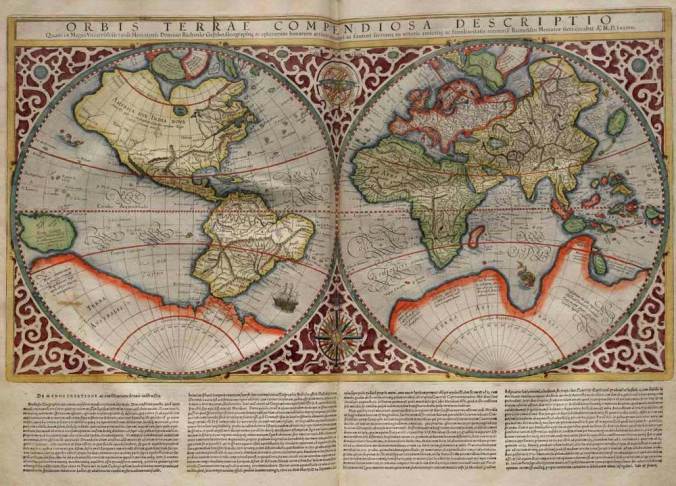On the “Domestic Issue” page of this blog, I’ve replaced the original chapter on Columbus with a much-expanded version, this one incorporating ideas about the Baroque (in particular Cuban writer Severo Sarduy’s ideas about it) as a tool for thinking about this hemisphere’s topography and culture. The basic idea is that Columbus’s attempt, in his account of his third voyage (which took him to the Venezuelan coast), to account for the enormous landmass that “shouldn’t” have been there by describing the Earth as actually being shaped like a pear is itself a manifestation of the Baroque, even though Sarduy associates the beginnings of the Baroque with Kepler’s discovery that the planets follow elliptical orbits around the Sun. A while back, I wrote about this here. Also, as you’ll see, I puzzle over the question of why Foucault, in The Order of Things, doesn’t identify a historical event as marking the sudden shift in Europe from Renaissance to Baroque thinking. (If you’re curious, though, in this post I try to make the case that Foucault’s discussion of the figure of Don Quixote as an emblem of the Baroque turns the Knight of the Sorrowful Countenance into a pretty good proxy for Columbus.)
In this new version of the chapter, there’s also some writing by way of setting up not only the Columbus stuff but the larger project that tries to make the case that our reclaiming the term “New World” from its European purpose of attempting to shoe-horn this hemisphere’s landmasses into a European-centered conception of the world would be a worthwhile thing to try to do.
I hope some of you might find your way over there and take the time to have a look–and, even better, offer up a comment or two. Thanks in advance.

